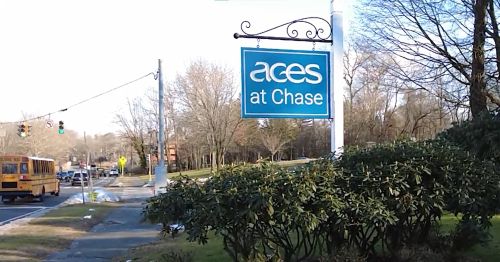-
Our Agency
- About Us
- Calendars
- Contact Us
-
Directions
- ACCESS
- ACES at Chase
- ACES International Preschool and Childcare Center
- ACES Transportation Services
- Center for Autism Spectrum and Developmental Disorders
- Central Office
- Educational Center for the Arts
- Educational Technology
- Little Theatre on Lincoln Street
- Mill Road School
- Network Services
- Staff Development / Administration
- Village School
- Whitney High School North
- Wintergreen Interdistrict Magnet School
- Human Capital Development
- Education Foundation
- News / Press
- Publications
- Request for Proposals
- Employment
- Events & Workshops
- Referrals
-
Schools & Programs
-
Special Education Schools
- Center for Autism Spectrum and Developmental Disorders
- Mead Elementary School
- Mill Road School
- Village School
- Whitney Academy EXPLORE & CREATE
- Whitney High School North
-
Magnet Schools
-
ACES at Chase
- About Us
- ACES at Chase: History & Origins
- Admissions
-
Student and Family Portal
- Breakfast and Lunch Menus
- Cancellations, Delays, and Early Dismissal
- Community Health Center
- Dress Guidelines
- Family Teacher Organization (FTO)
- Health Office
- Principal's Corner
- Monitoring Grades: PowerSchool Parent Portal
- Quick Links
- Student Handbook
- Summer Reading and Math
- Technology & Digital Citizenship
- Virtual Suggestion Box
- Document Library
- Contact Us
- Back to ACES
- Educational Center for the Arts
- Wintergreen Interdistrict Magnet School
-
ACES at Chase
- Alternative Education
- ACES Early Head Start
- ACES International
-
ACES International Preschool and Childcare Center
- About Us
- ACES International Preschool and Childcare Center Donations
- Admission Interest
- Meet the Staff - Newtown Center
- Meet the Staff - Woodbury Center
- Calendar
- Contact Us - Newtown Center
- Contact Us - Woodbury Center
- Family Portal
- Enroll Now: ACES International Preschool and Childcare Center Newtown Location
- Back to ACES
- ACES Open Choice
- Family and Community Engagement
- Magnet School Parent Choice
- School-Based Services
-
Special Education Schools
-
Services
- ACCESS Adult Vocational Services
- ACES Insurance Collaborative
- ACES UP Renewable Energy Solutions
- Alternate Routes to Certification
- Business Partnership Opportunities
- Center for Safe Schools
- Clinical Services
- Educational Technology
- Facility Rental
- Fingerprinting
- International Programming
- Marketing and Communications Services
- Network Services
- Professional Learning
- Regional Education Councils
- Regional Special Education Transportation
- Speech and Language Services
- Transportation
- World Language Services
- Find
« Back to News List
« Back to News List
Little Theatre Lives!
June 9th, 2014
In the vitrine outside the building was a copy of a 90-year-old playbill for The Romantic Age by A.A. Milne, the first show performed in 1924.
Inside the building, the vocal ensemble of talented high schoolers sang Bruno Mars’“Just the Way You Are,” the first performance in the space in five years.
But Friday afternoon the star of the show was the building itself, the Little Theatre on Lincoln Street.
The New Haven architectural and cultural landmark (formerly known as the Lincoln Theatre) at 1 Lincoln St. has survived attempts at obliteration in the 1960s and 1980s. It has now officially come back to life after a five-year, $5.8 million gut rehab.
Most of the money came from a state grant, with some foundation support. Some families and neighbors “purchased” seats in honor of relatives. For example, as a little girl ACES Board Chair Alicia Clapp saw Heidi performed at the Little Theatre and never forgot it, complete with a goat her dad supplied to the production. She named two seats after her grandchildren, both graduates of ECA.
Friday’s long-awaited ribbon-cutting ceremony drew a crowd of officials, neighbors who remember the place for their first dates or theater or racy art-film experience; and lots of staff and kids from Area Cooperative Educational Services (ACES), which operates the half-day arts magnet high school, the Educational Center for the Arts (ECA), around the corner.
ACES/ECA bought the building in the mid 1980s, gave it a first modernization in 1986, and has brought it back to life with multi-purpose, ultra modern facilities for use by its students; and after a break-in phase, continued use, on a rental basis, by the community.
Svigals + Partners Architects principal Julia McFadden, who managed the Little Theatre project, said “there is nothing little about the challenges of any aspect of the work.”
Some of those challenges included a tight site, the presence of neighbors in a residential district, and crumbling foundations that had to be shored up.
There was also the necessity to maximize every square inch both as performance and also teaching space. The national landmark status, which protects the building, made the project one-year construction schedule extend to five.
On Friday, during a tour of the space led by McFadden, everyone agreed the wait was worth it.
Among the niftiest features: The stage floor has been lowered several feet for better sight lines. And a basement was dug three feet down so that the floor can be hydraulically lowered from flat—usable as a classroom or rehearsal space—to a ranked performance auditorium or little theater in the round as needed.
McFadden showed off a dressing room on the second floor where the entire cast of Midsummer Night’s Dream might put on its glitter and fairy make-up, while behind the actors a group of dancers could practice in front of the floor-to ceiling mirrors.
The square footage of the building has grown from about 6,000 to 9,000, and about 30 additional seats added to the main auditorium.
McFadden pointed out an acoustic screen that can pull across the stage on tracks, creating enough of a barrier so that two classes, rehearsals, or performances can go on simultaneously.
“Double duty for each space,” said McFadden.
Former Alder Bitsie Clark, who helmed the Arts Council in the 1980s, said she well remembers that the council itself was prepared to tear the building down to make way for more arts districts apartments. She said the true rescuers were the local theater devotees who had built the building and their families and descendants, who led the charge for national landmark status.
She pronounced the prop room exciting, along with another room to be used for scenic design, complete with dust collection hoses, and fixtures for table saws to create flats and other objects of theater magic.
After ACES students sing, dance, act, and carry creatively on in the new spaces, the Little Theatre should be available to rent to the public as early as September, said ACES Executive Director Craig Edmondson.
For full article and photos, go to: Little Theatre Lives!












